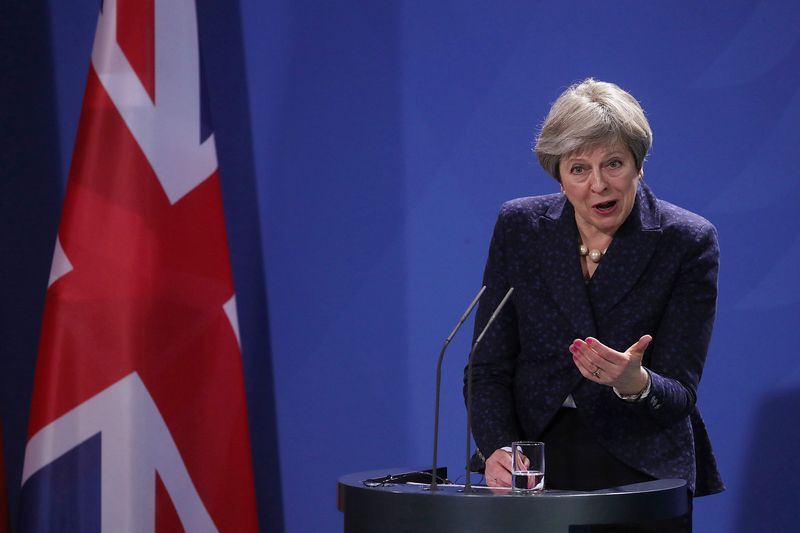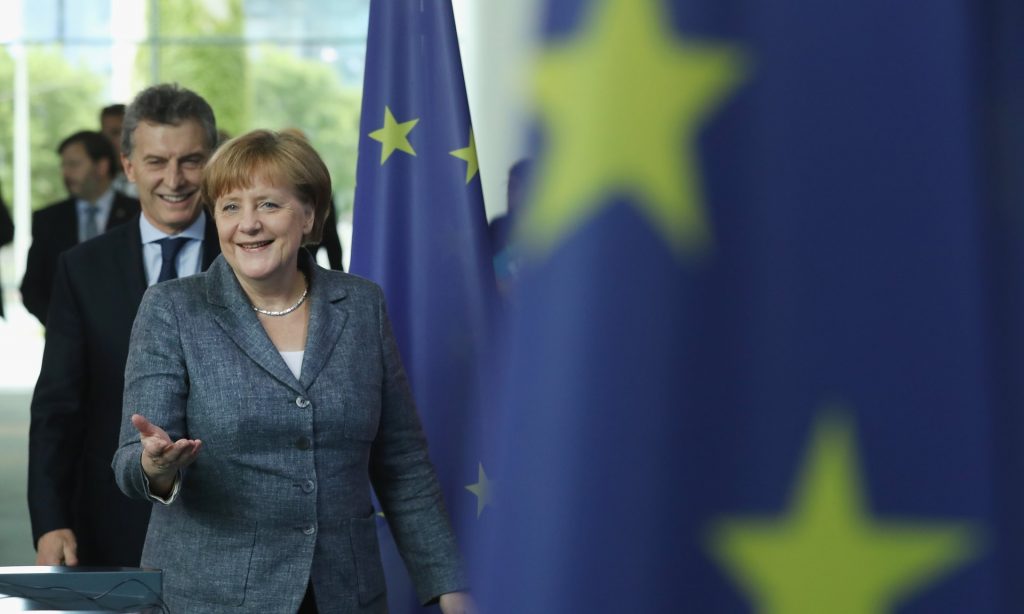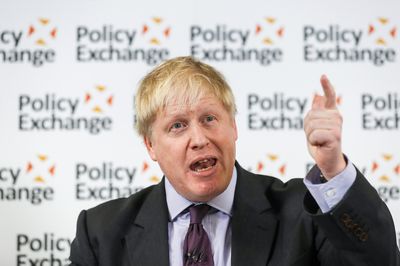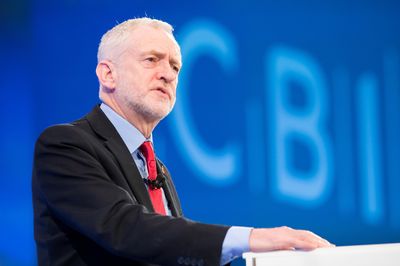
As Theresa May retreats to the countryside with her Cabinet to thrash out differences on Brexit, it’s starting to become clearer what the prime minister wants the divorce to look like.
Some in Brussels will call it cherry-picking, but May wants to stay very close to the European Union in some areas, while breaking free in others. With trade talks round the corner, a picture is emerging after Foreign Secretary Boris Johnson kicked off a series of big speeches last week.
Next up is the U.K.’s chief negotiator. Last time David Davis spoke, he said very little would change after Brexit and that the important thing was just to win the freedom to ditch EU rules if a future government chose to.
With just 13 months until Brexit Day, here’s where we are:
1. May wants to pick and choose EU rules
May wants to drop EU rules in some areas immediately, for example financial services and agriculture, according to officials familiar with her thinking. But in other areas, alignment with the EU is favored in the longer term.
Johnson, the face of the Brexit referendum campaign and a potential rival to May, offered some support to this idea by giving concrete examples where sticking to the same regulations would make sense: manufacturing goods, such as vacuum cleaners and hairdryers.
When it comes to data, May was clear she doesn’t just want alignment, she wants the U.K. to keep its role in making the rules. Data is key for businesses as well as security and defense — where May also wants a tight relationship.
Rules are important because trade ultimately depends on it: keeping them should mean better access to the single market. But the EU says countries can’t pick and choose which bits of the single market they want access to — it’s all or nothing.

2. Merkel indicates a tolerance for cherry-picking
German Chancellor Angela Merkel indicated on Friday that seeking a tailor-made deal after the split doesn’t necessarily mean “cherry-picking.” While the Commission says May has to choose between the kind of relationship Norway has with the bloc — close economic ties but following rules it has no say in making — or the trading relationship that Canada has, Merkel opened the door to something in between.
3. The latest fight is over enforcement
What the Cabinet is fighting over now is how the future relationship between the EU and U.K. should be enforced or policed, according to officials. It’s controversial because breaking free from EU institutions and courts was a massive issue in the referendum campaign — where a big selling point for Brexit was “taking back control.” But a close trading relationship will probably require European regulators to have some say in enforcement, even if only indirectly.
4. Ireland is still a riddle
In December, in order to break a deadlock in talks, May promised that no hard border would emerge on the island of Ireland after Brexit. To guarantee that, she pledged that if no other solution was possible, the rules of Northern Ireland will remain aligned with those of EU member Ireland so that no border is needed. But she also promised that there would be no border between Northern Ireland and mainland Britain — suggesting that the whole of the U.K. would have to keep its laws aligned.
Ireland continues to remind May of her promise, and no one is any closer to figuring out how the two mutually exclusive pledges can be kept. The only obvious way is to stay in the single market or customs union, which May has ruled out. The Cabinet is now fighting over Northern Ireland, as Brexit backers think pro-EU ministers are using the specter of a return to violence as an excuse to keep the U.K. tethered to the EU forever.

Photographer: Simon Dawson/Bloomberg
5. Brexit backers are soft on immigration
Johnson is often referred to as a Brexit hardliner — and he can be — but not on immigration, where his views are much more aligned with pro-EU elements in the Cabinet, such as Home Secretary Amber Rudd.
In his own words on Feb. 14: “We do not want to haul up the drawbridge; and we certainly don’t want to deter the international students who make such a huge contribution to our economy, with 155,000 Chinese students alone.”
So who is the outlier? May, who as the former home secretary was under huge pressure to bring net migration below 100,000 a year (a goal that still stands and has never been met). She believes the referendum result was primarily about immigration and was quite clear recently in saying something needs to change for EU citizens in the U.K. after Brexit.
The government has yet to set out the immigration policy it wants after Brexit, to the frustration of businesses trying to plan ahead.
6. Labour is also groping its way to Brexit clarity
It’s not just the Tories who need to get specific, the pressure is mounting on Jeremy Corbyn to abandon a strategy of constructive ambiguity. He’s been a lifelong euroskeptic but many in his party, as well as Labour-leaning voters, are pro-EU.

Photographer: Jason Alden/Bloomberg
The party leadership is staging its own “away day” this week (May’s is on Thursday) and the person who would hold Johnson’s job, Emily Thornberry, gave one of the clearest indications yet of what kind of trading relationship Labour would pursue for a Brexit that would put “jobs first” and also solve the Irish border conundrum.
“We’ve looked at it and we cannot see a way forward when it comes to Northern Ireland or to tariff-free trade across Europe without us being in some form of customs union that probably looks very much like the customs union that there is at the moment,” she said on ITV’s “Peston On Sunday.”

